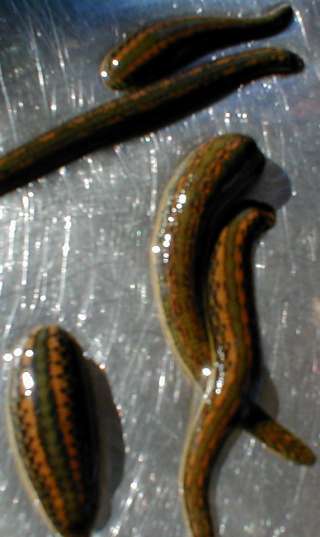
Wait. They still are.
The standard medicinal leech (Hirudo medicinalis) can be found all around Europe and in Kazakhstan (Borat territory). Although several other species of leeches can be used, this one is understandably the most common. All are annelid worms that suck blood better than Edward Cullen. In the wild, however, H. medicinalis is protected and even considered a Vulnerable species by CITES. Best get your leeches from a licensed dealer, now.
The bite from a leech is almost painless. The worm makes a y-shaped incision with its tripartite jaw, then attaches to its host with its suckers. The leech stays attached for only as long as it takes to fill its gullet with blood, which may be five to ten times the leech's weight. They can live up to a year between feeding, putting Burmese pythons to shame.
 |
| Still pretty to me. |
Way back when, leeches were used to balance out the four humors of the body: blood, yellow bile, black bile, and phlegm. If you think this sounds gross, it was. There were various methods to balance these four out, including giving wine to people who were coughing up phlegm and, of course, putting leeches on a person considered 'sanguine.' That means 'too extroverted' or 'had a fever' in today's terms. (For the record, I seem to be very Mel-San according to Wikipedia.)

Nowadays, leeches are still used to remove excess blood. They also secrete an anticoagulant (Hirudin) like all hematophagous creatures do, which makes them handy for removing clotted blood. They can also re-stimulate circulation when it comes to reattaching body parts that require a lot of blood, such as eyelids, fingers, and ears. Think about that next time you want plastic surgery.

Could I use your picture of a leech for a website?
ReplyDelete